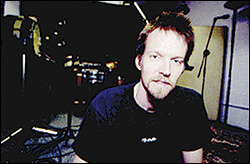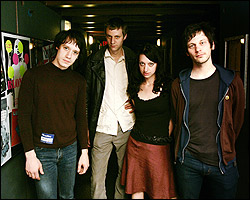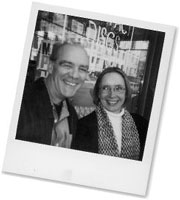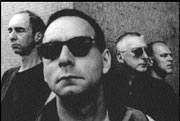Seattle Weekly: Probably because I know you as a frequent member of Climax Golden Twins and Sun City Girls, I tend to think of your engineering and production work—for acts like Mudhoney, Transmissionary Six, Black Cat Orchestra, and Animal Collective—as more hands-on than hands-off. Is that so?
Scott Colburn: The creative process of recording or making music is such an emotional experience. How could you not get involved with the process? Sure, I could sit there pushing faders and twiddling knobs, but that would make me go insane. I truly feel that what I do is art. Besides, my name is on that record along with the musicians’, so I need to be happy with the results. My job is to help a group realize their artistic visions. I work fast and intuitively, and that keeps everyone happy.
I know you’ve also worked on some older recordings by Northwest legends the Sonics and the Wailers. How did those projects come about and what was involved?
My involvement with Sonics and the Wailers was in answer to a crisis. Several boxes of old, original tapes—which included Sonics and the Wailers material—were discovered to have been water damaged in someone’s basement, so my job was to save them. I had to clean them up and transfer them to a digital medium. The cleaning process almost put me in the hospital because of all the mold I inhaled, but what was really cool about this project was pulling a moldy reel out of a crate, cleaning it, processing it, and finally being able to play it once all was done. Hearing the original two-track recording of [the Sonics’ 1965 single] “Boss Hoss” and realizing that it sounded better than the CD I used for reference made me realize how robust the analog medium is.
I’ve heard that you live and work in an amazing 1908 church in Ballard. How does the space play into your work?
The church is a new addition to my big bag of tricks. We can have a roaring fire burning to influence deep lyrics, candles galore for melodic pieces, and a 17-foot ceiling for drum tracks. It’s a gas! I have always worked to make my studios creative environments, and moving into this space has allowed me to realize my production method of “deep space.” Most recordings just layer sound in a vertical direction—vocals on top, drums a little lower, guitars lower still—but there is another depth direction that a lot of recordings ignore completely. The church’s acoustics allow me to place instruments in a three-dimensional space without artificial means, and that’s an amazing quality to provide for any sound.








